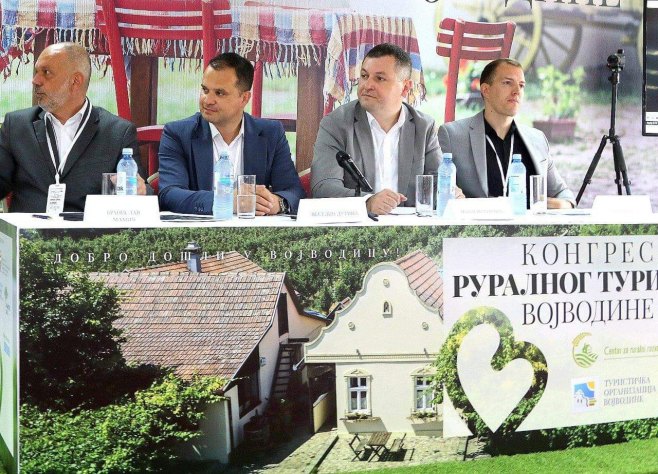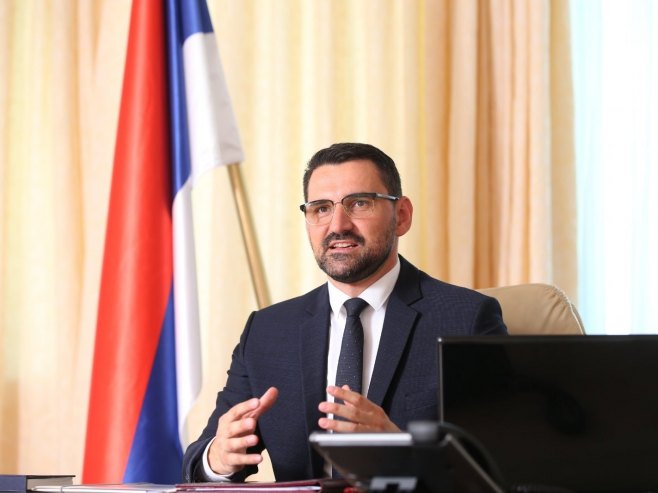The town of Pale marked the 50th anniversary of the discovery and beginning of research of Orlovača Cave near Sumbulovac — one of the most significant speleological sites in Republika Srpska, Bosnia and Herzegovina, and the wider region.
Located along the Pale–Sokolac road, Orlovača Cave was declared a natural monument in 2011, classified in the third category according to international standards, under the second protection regime.
To mark this important jubilee, plaques were awarded to the cave’s first explorers and to individuals who contributed to its study and promotion — academician Milovan R. Pecelj, Muhamed Hadžiabdić, Vlado Vuković, Jasminko Mulaomerović, Professor Jelena Golijanin, and posthumously to Miroslav and Božidar Kurtović and Savo Minić.
The cave is managed by the Cultural and Sports Center “Pale.” Its director, Slavka Brezo, told reporters that this jubilee is of great importance for the municipality of Pale and the city of East Sarajevo, as Orlovača has, over the past five decades, become an essential tourist attraction for nature lovers and speleologists alike.
She thanked everyone who has helped preserve this natural gem and contributed to improving the area around the cave.
“We hope to continue receiving support from the municipality of Pale, the city of East Sarajevo, and the relevant ministries,” Brezo said.
Brezo invited nature enthusiasts to visit the cave, which stretches for 2.5 kilometers, with 565 meters of it open to tourists.
The cave’s first explorer, Muhamed Hadžiabdić, recalled that he and his colleagues — the Kurtović brothers and Momčilo Piljević — recognized the site’s importance and worked to include it in the region’s tourist offerings.
“At the invitation of Savo Minić, we entered the cave for the first time on September 13, 1975, and began our exploration. Initially, access was difficult — there were problems with flooding, and it was sometimes closed for safety reasons. We explored the cave for ten years. Back then, there were no small cameras, so we would lower an eleven-year-old boy through a narrow opening so he could describe what he saw inside,” Hadžiabdić said.
He added that once the cave was made accessible, they began detailed research and invited experts from various fields to help present the site’s value to the world.
Another contributor to Orlovača’s promotion, Vlado Vuković, emphasized the need for further development and evaluation of the site to make it an even greater attraction for organized tourist tours.
Boško Jugović, President of the Assembly of the City of East Sarajevo, said that many people deserve credit for promoting Orlovača Cave, stressing that the municipality of Pale and the city of East Sarajevo will continue supporting tourism development in the Sarajevo-Romanija region.
“We must further promote this natural jewel. I especially call on the Ministry of Education and Culture of Republika Srpska to include the story of this cave in educational programs, as it should be a source of pride for all of us. We are also working to attract more visitors through the city’s Tourist Organization,” Jugović stated.
Academician Milovan Pecelj, former dean of the Faculty of Philosophy at the University of East Sarajevo, noted that the cave once hosted a scientific and educational field base for students.
“There was a geomorphology, speleology, climatology, and hydrology laboratory here, along with a geography student camp, which played a major role in their professional development,” Pecelj said, adding that Orlovača is one of the richest caves in the Balkans in terms of formations.
He highlighted the exceptional quality and diversity of the cave’s formations, noting that the largest brown bear ever discovered in the region was found there.
An asphalt road leads to a small house that hosts a souvenir shop and the Orlovača Museum, located just below the cave entrance.
Inside, visitors can see a cross-section of a stalagmite, paleontological remains of the cave bear — a species that went extinct 10,000 to 12,000 years ago — and other artifacts. The discovered bones are estimated to be over 16,000 years old.
With its rare decorations formed by both chemical and mechanical action of water, Orlovača Cave stands as one of the most beautiful caves in Republika Srpska and Bosnia and Herzegovina.
Source: See Srpska








